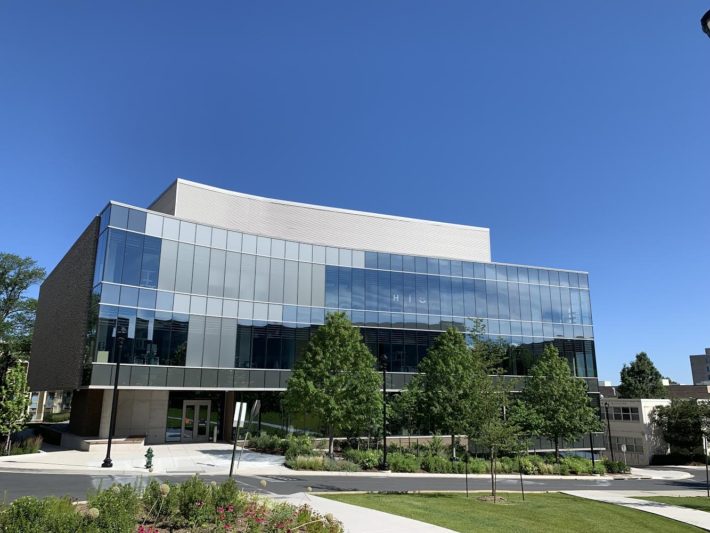By Daniel Rosato and Kavish Siddhartha
National Student Leadership Conference attendees and some American University undergraduate students are the first to use the new Hall of Science building on campus this summer. Construction of the brand new, 125,000-square-foot, state-of-the-art facility spanned two years, finishing in October 2020 — but because of the pandemic, it has been largely empty since then.
The building houses the departments of biology, neuroscience, chemistry and environmental science and will be used full-time by undergraduate students for the upcoming fall semester.
Lily Duboff, a rising AU junior who is majoring in public health and minoring in biology, has been working on genetics labs in the new center this summer.
“I was super excited and I think that I was even more excited because we had been away for almost a year,” Duboff said. “The idea of going from Hurst Hall, which was our old science building, to this new fantastic, beautiful and pristine building, the Hall of Science, was a major upgrade.”
National Student Leadership Conference attendees in the medicine and healthcare, psychology and neuroscience, and biotechnology programs are also using the new building this week, and enjoying all that it has to offer.
“[The Hall of Science] is a well-thought-out, well-kept building,” Chase Trapp, a rising high school senior and student of the psychology and neuroscience program, said. “We used the microscopes the other day and they were crystal clear… The lecture halls are nice and open.”
University science department staff are also happy to have a new home. “It will increase the ability of our faculty and students to gain the knowledge of the brain and nervous system that is needed to address current and future challenges to human health and well-being,” neuroscience professor and Director of the Center for Behavioral Neuroscience Terry Davidson said in a 2020 statement.
The new building also increases collaboration among members of different studies and brings “a level of community to the science students and staff and faculty that we didn’t have before,” Duboff said. In years past, science students conducted labs, lectures and research in various halls across campus, such as Hurst Hall and the Battelle-Tompkins Hall. Duboff said the science community did not have their own strong home prior to the Hall of Science.
The new science building was not constructed without controversy. Construction began early in the morning with loud noise and was adjacent to the main three freshman dorms: Letts, Anderson, and Centennial Halls. However, the university was receptive to student concerns regarding these issues.
“Our student government worked with administration, who then worked with construction people,” Peyton Proksch, an American University undergraduate student said.
“The bigger issue was having construction workers on campus,” Proksch said. Workers used a popular Subway restaurant on campus to eat, which is also commonly used by students for lunch. This elongated the lines, which frustrated both workers and students.
Now completed, the Hall of Science is uniquely designed to include additional amenities to accomodate students. For example, on the third floor, amid biology research labs, there is a meditation and prayer center for students to use, “which is nice because it provides a safe space for students to feel comfortable,” Duboff said.
American University students will return to in-person learning for the fall semester as a part of AU’s reopening plan, known as AU Forward. This will allow for the Hall of Science to be used for the first full academic year.
“The Hall of Science is a campus jewel: a brilliant, state-of-the-art facility supporting the cutting-edge research conducted by our science faculty and students who can learn right alongside them in high-tech labs and classrooms,” interim dean of the College of Arts and Sciences, Max Paul Friedman said in an October 2020 statement. “It’s concrete-and-glass evidence of our commitment to a renaissance in the sciences at AU.”
